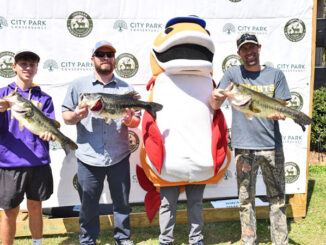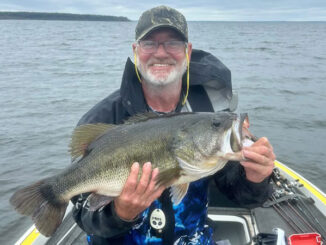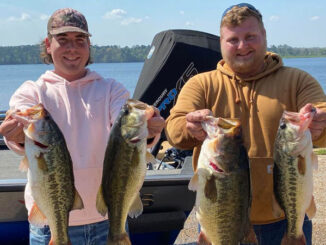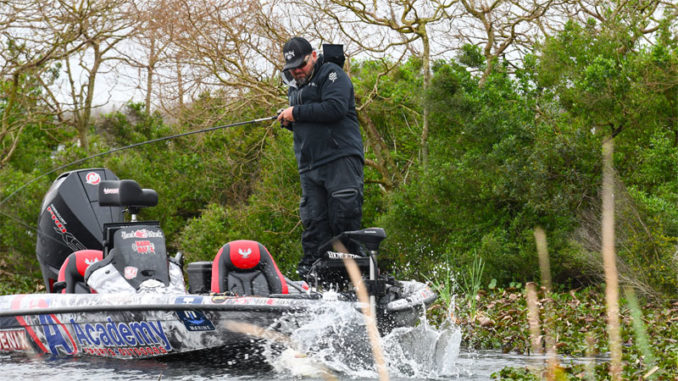
Greg Hackney, a pro bass fisherman from Gonzales, La., said largemouths have taught him some valuable lessons that have helped him excel on national bass fishing circuits.
Anglers who don’t recognize that bass feed on smaller baits, experience significant fishing pressure and are heavily affected by unstable weather, they’re going to struggle.
“Just because you downsize your lure doesn’t mean you’re downsizing the size of the fish, because you are generating bites,” Hackney said.
The bass in waters that Hackney fishes feed on smaller baitfish and crustaceans, especially this time of the year.
“The first baitfish to move shallow are the shad born this year,” Hackney said. “If you go to Venice, you’ll catch one hundred 3-pounders a day when the conditions are right. Even to catch 5-pounders, you have to downsize your lure, not because of fishing pressure or weather, but because of the size of what they eat.”
Early in the year, when the Blind River doesn’t have matted vegetation, Hackney will target cypress trees on breaks, parking his boat in 15 feet of water but casting to bass living in 2 to 4 feet.
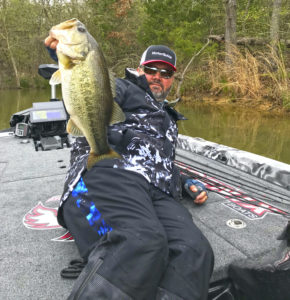
Time to go small
This time of the year, Hackney turns to smaller lures to match what bass are eating. He loves to fish a buzzbait, and in December, it will be a 1/8-ounce Strike King Mini Pro. He crimps the rivet to make the blade squeaks as it’s retrieved and discards the skirt in exchange for a Strike King Baby Menace grub to mimic a small baitfish flittering on the surface.
Because he’s throwing a smaller bait, he drops from a longer rod to a 6-foot-8 Lew’s Hack Attack baitcaster paired with a Lew’s BB1 reel spooled with 14-pound monofilament. If he needs to fish a spinnerbait, he also goes small, with a ¼- to 3/8-ounce Strike King Money Maker rigged with a small trailer hook, fished on 14-pound Gamma Edge fluorocarbon on a 6-foot-10 rod.
“Some places in the marsh are where our biggest fish live, but it doesn’t matter, because it is about what they eat,” said Hackney, who refined his skills cranking dead-end canals in Blind Creek during the early spring with a red, ¼-ounce Strike King Red Eye Shad or black back/chartreuse KVD 1.0 square-bill on his 7-foot, medium/moderate action crankbait rod. The rod’s slower action allows bass to really eat the crankbait without fear of pulling it away from them.
Matted vegetation doesn’t exist in all canals since the hyacinths are sprayed for navigation purposes. Hackney cranks the coon tail that grows in the middle for bass that pull off the bank and nestle in. He keeps his lipless crankbait just above the vegetation growing on the bottom.
“When you find the grass, I just pole down and make repetitive casts,” said Hackney, who moves to 12-pound fluoro on his buzzbait outfit to get better action out of the bait. “That is the key to cold-water fishing. You move angles and want that bait to hit the grass. That’s a reaction time of the year.”
Hackney also targets suspended bass on bridge pilings with a drop-shot rig fitted with a 1/16-ounce weight and a Strike King Half Shell, a small, soft-plastic bait.
When choosing bait colors, common sense prevails. The color of the water will influence the color of the baitfish and crustaceans.
The rate of retrieve is critical.
“A lot of time, it’s the speed that gets the bite in those weather conditions. You are trying to get a reaction bite, and it seems like that little bait moving fast generates a bite,” Hackney said.
The same basic rules apply; reel slower in colder water and more quickly in warmer water.
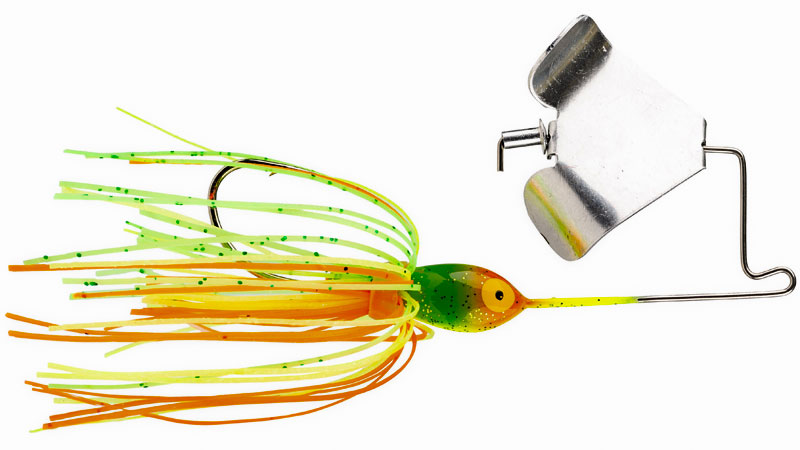
Unstable weather
Weather greatly influences fish activity, as does barometric pressure. Those days, when nature is active and birds are chirping, anglers grin, knowing a great day is ahead. When faced with minimal wind and blue-bird skies, Hackney knows to downsize.
Cold fronts can throw a monkey wrench into the best-laid plans. The first day after is always best; bass can be caught the same way as the previous day. The second day provides the toughest conditions because the sun is out, the wind has subsided and the skies have cleared, Hackney said.
There are exceptions to every rule; on a body of water that doesn’t see much fishing pressure totally throw this out, he said.
Fishing and mental pressure
Tough fishing conditions are no time for ego or stubbornness; getting spun out won’t help your cause, either.
“You have to fish what’s in front of you. If you go to a body of water where 10 pounds is a big bag, you fish for 10 pounds. You can’t make something out of what doesn’t exist,” said Hackney, who won the FLW’s Forrest Wood Cup in 2009 by junk-fishing with downsized lures.
Growing up fishing in Arkansas, Hackney doesn’t remember ever needing to downsize, due to big fish, big forage and manageable fishing pressure. By contrast, his home waters in Louisiana are chock full of anglers.
“They have a Wednesday night tournament at the St. James Boat Club, and a big bag is 8-6. You have to fish that size of fish.”
Not only are bass fisherman getting better, the fish are getting wiser.
“The average angler is so much better,” Hackney said. “It seems that bass never get accustomed to small plastics because they’re so natural and are the closest baits we throw to matching Mother Nature like they do certain crankbaits and rattles, knowing not to bite them.”

Fishing a big stick
Hackney fishes several situations where he can still go big, just not as big as normal. He will pitch and flip dead hyacinths with familiar sticks, his 7-foot-6 and 7-foot-11 signature series rods, but his bait is still small, a 3-inch Strike King Baby Rodent that fits perfectly on a 4/0 hook. It’s the only bait he needs. A 4-inch bait simply won’t get bit.
Soak the bait, and don’t move it quickly.
“I’ll flip it in, let it go to the bottom, then pull it back up and hold it,” Hackney said, noting that bass are most-often suspended, just under the mat. “Very few times do I catch them on bottom under a mat.”
The day after a cold front, when winds might move the mat around, he’ll suspend his bait. When fishing standing grass, those bass will be on bottom.
Let the bass tell him what fall rate they want.
“When you’re flipping mats, and you think you saw you line jump or twitch, or you feel a bump and you don’t get the fish, downsize your weight,” Hackney said. The fish might be turned off by the quicker fall when paired with a smaller plastic.
When the water is colored, bait colors like black/blue, Okeechobee craw and candy craw excel, while California craw is best in flat, clear water. Black neon is Hackney’s favorite during the winter, as crawfish are usually black and red.
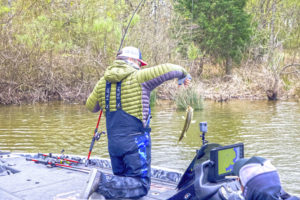
Crack ’em on a jig
Even when he fishes a jig, he goes smaller. He uses a compact Strike King Bitsy Flip jig which has a sturdy Mustad hook that won’t flex on a hookset. Add a Baby Rage Craw to keep his offering compact. Especially useful in colder weather, he can also fish behind other anglers and pick off fish they missed.
The Blind River is the closest body of water to Hackney’s home, and he can’t remember the last time he caught a bass on a full-sized jig. After all, their average size is only a pound.
“Occasionally in the spring, you’ll catch a 6-pounder, but they are few and far between,” Hackney said. “Most of those fish are marsh bass and not very big.”
